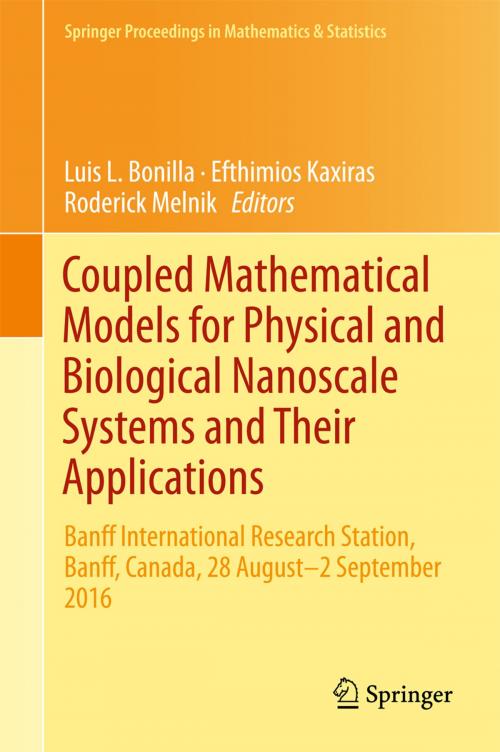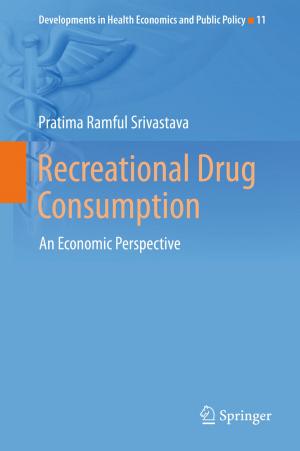Coupled Mathematical Models for Physical and Biological Nanoscale Systems and Their Applications
Banff International Research Station, Banff, Canada, 28 August - 2 September 2016
Nonfiction, Science & Nature, Mathematics, Applied, Computers, Advanced Computing, Computer Science| Author: | ISBN: | 9783319765990 | |
| Publisher: | Springer International Publishing | Publication: | June 20, 2018 |
| Imprint: | Springer | Language: | English |
| Author: | |
| ISBN: | 9783319765990 |
| Publisher: | Springer International Publishing |
| Publication: | June 20, 2018 |
| Imprint: | Springer |
| Language: | English |
This volume gathers selected contributions from the participants of the Banff International Research Station (BIRS) workshop Coupled Mathematical Models for Physical and Biological Nanoscale Systems and their Applications, who explore various aspects of the analysis, modeling and applications of nanoscale systems, with a particular focus on low dimensional nanostructures and coupled mathematical models for their description.
Due to the vastness, novelty and complexity of the interfaces between mathematical modeling and nanoscience and nanotechnology, many important areas in these disciplines remain largely unexplored. In their efforts to move forward, multidisciplinary research communities have come to a clear understanding that, along with experimental techniques, mathematical modeling and analysis have become crucial to the study, development and application of systems at the nanoscale.
The conference, held at BIRS in autumn 2016, brought together experts from three different communities working in fields where coupled mathematical models for nanoscale and biosystems are especially relevant: mathematicians, physicists (both theorists and experimentalists), and computational scientists, including those dealing with biological nanostructures. Its objectives: summarize the state-of-the-art; identify and prioritize critical problems of major importance that require solutions; analyze existing methodologies; and explore promising approaches to addressing the challenges identified.
The contributions offer up-to-date introductions to a range of topics in nano and biosystems, identify important challenges, assess current methodologies and explore promising approaches. As such, this book will benefit researchers in applied mathematics, as well as physicists and biologists interested in coupled mathematical models and their analysis for physical and biological nanoscale systems that concern applications in biotechnology and medicine, quantum information processing and optoelectronics.
This volume gathers selected contributions from the participants of the Banff International Research Station (BIRS) workshop Coupled Mathematical Models for Physical and Biological Nanoscale Systems and their Applications, who explore various aspects of the analysis, modeling and applications of nanoscale systems, with a particular focus on low dimensional nanostructures and coupled mathematical models for their description.
Due to the vastness, novelty and complexity of the interfaces between mathematical modeling and nanoscience and nanotechnology, many important areas in these disciplines remain largely unexplored. In their efforts to move forward, multidisciplinary research communities have come to a clear understanding that, along with experimental techniques, mathematical modeling and analysis have become crucial to the study, development and application of systems at the nanoscale.
The conference, held at BIRS in autumn 2016, brought together experts from three different communities working in fields where coupled mathematical models for nanoscale and biosystems are especially relevant: mathematicians, physicists (both theorists and experimentalists), and computational scientists, including those dealing with biological nanostructures. Its objectives: summarize the state-of-the-art; identify and prioritize critical problems of major importance that require solutions; analyze existing methodologies; and explore promising approaches to addressing the challenges identified.
The contributions offer up-to-date introductions to a range of topics in nano and biosystems, identify important challenges, assess current methodologies and explore promising approaches. As such, this book will benefit researchers in applied mathematics, as well as physicists and biologists interested in coupled mathematical models and their analysis for physical and biological nanoscale systems that concern applications in biotechnology and medicine, quantum information processing and optoelectronics.















